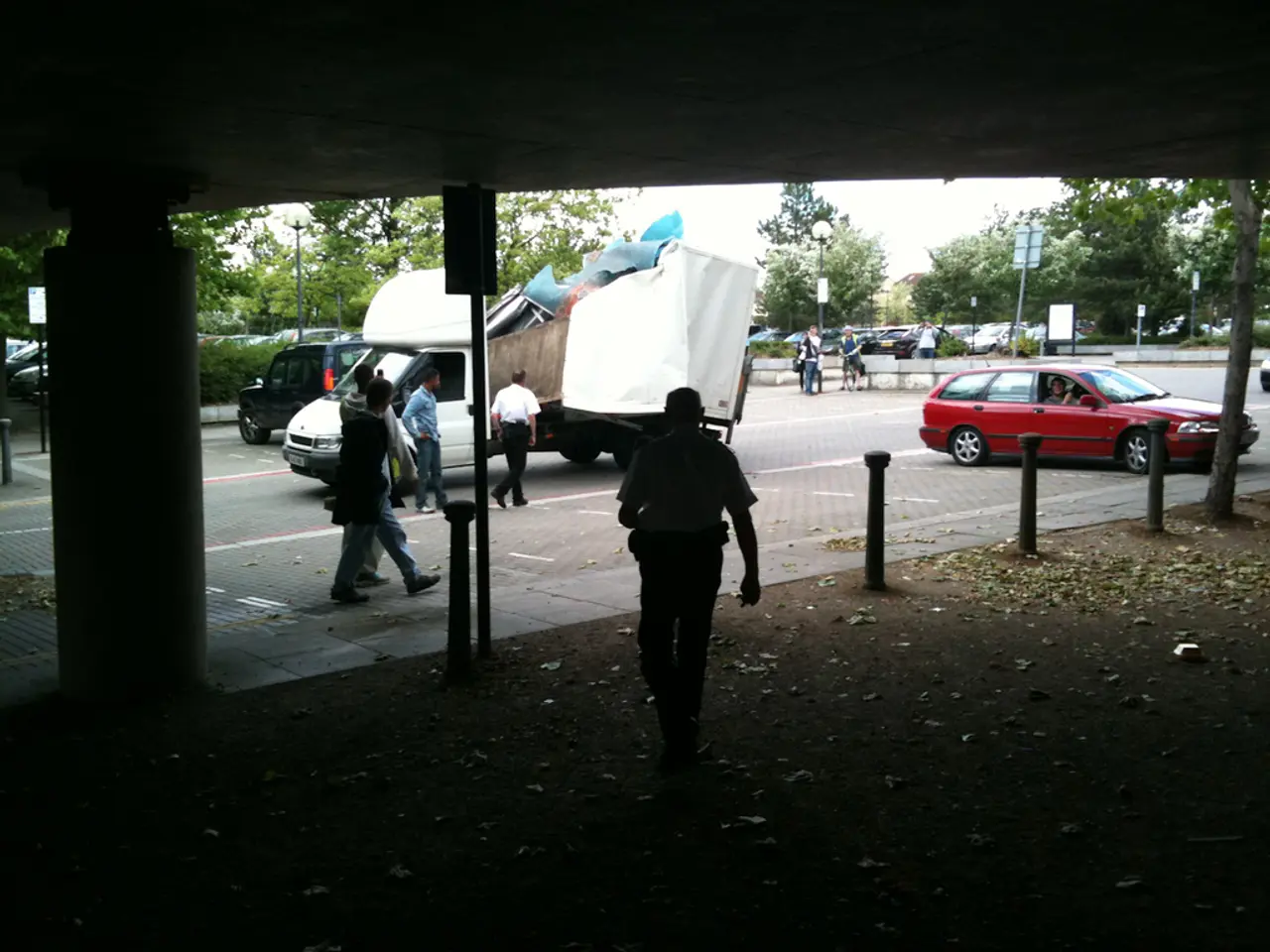Expanded pricing for Model Y, Model S, and X; Decline in Tesla stock; Agreement regarding 4680 battery production
The Tesla Model Y, now available for order in the West since late January, with deliveries expected to begin in March, has seen significant updates to its battery capacity. These improvements aim to increase the vehicle's range and efficiency, making it a more attractive option for environmentally-conscious consumers.
However, Tesla might face challenges in exclusively using a key technology developed by German machinery manufacturer Saueressig for its batteries. An arbitration court ruling has allowed Saueressig to offer the dry coating of electrodes technology to other companies, potentially impacting Tesla's battery production.
In Europe, the Model Y in Germany no longer offers a €6,000 discount, and state electric vehicle subsidies in France have been significantly reduced. Meanwhile, the base versions of the Model S and Model X in Germany have increased by €17,000, while the Plaid variants have seen price increases of at least 11%. Despite these price hikes, all versions of the Model S and Model X are now once again being offered with free charging at Superchargers.
In a different market, China, Tesla is offering the new Model Y in two versions, with the older versions no longer available for order. Chinese competitor BYD is planning to unveil plans for "smart driving" across its entire electric vehicle lineup, likely including features similar to Tesla's Autopilot and FSD software.
Sales of Tesla vehicles in Germany have seen a significant drop. In 2024, sales dropped by 41%, and a further 59% in January compared to the previous year. Across the 15 most important European markets, sales fell by around 47% to 9,605 electric vehicles.
There is speculation that Tesla is preparing a further refresh of its premium models, Model S and Model X, or might soon discontinue them due to their perceived status as "niche products." Elon Musk, the CEO of Tesla, has been less vocal about the company and more about politics, taking on the unofficial role of chief of the DOGE commission for increased government efficiency after Donald Trump's election victory.
The latest updates on Tesla's Model Y battery capacity indicate a boost in battery size and resulting range improvements for 2025 and 2026 models. The 2025 Tesla Model Y Long Range All-Wheel Drive features a 78.1 kWh Lithium Iron Phosphate (LFP) battery with a range of 533 km (about 331 miles). For 2026, Tesla has upgraded the dual-motor Long Range AWD Model Y with a more powerful Nickel Manganese Cobalt (NMC) battery, increasing gross capacity from about 82 kWh to an estimated 89 kWh, which raises the EPA/WLTP rated range from around 551 km to about 600 km (373 miles).
These upgrades come mostly from improved battery chemistry (transitioning from LFP to higher-energy-density NMC cells) and better charging technology, while maintaining similar pricing and performance specs. Charging capabilities have improved alongside battery upgrades, with maximum DC fast charging rates now up to 250 kW, allowing rapid addition of up to 283 km (176 miles) of range in 15 minutes for the 2026 model.
In addition, a new radar sensor for the interior has been installed in the Model Y, which will provide more accurate airbag deployment and detect if someone has been left on the backseat with a software update in the third quarter. Tesla has visually updated the Model Y, both inside and out, with smaller brake rotors to improve efficiency and reduce wind resistance.
Despite these advancements, Tesla still faces challenges, including the potential impact of the Saueressig arbitration court ruling and the ongoing production issues with its 4680 format batteries. The production of Tesla's own 4680 format batteries is far from meeting the planned pace, and they don't seem to be part of the plans for the new Model Y. Instead, Tesla is currently using battery cells from LG Energy for the new Model Y in China and Europe, with a net capacity of around 78 kilowatt-hours.
In summary, Tesla has progressively enhanced the Model Y’s battery from around 78-82 kWh to near 85-89 kWh, resulting in a range increase from roughly 533 km to 600 km for the Long Range All-Wheel Drive variant. These upgrades come mostly from improved battery chemistry (transitioning from LFP to higher-energy-density NMC cells) and better charging technology, while maintaining similar pricing and performance specs.
[1] Tesla Model Y Long Range All-Wheel Drive (2025) Specifications
[2] Tesla Model Y Long Range Dual Motor (2026) Specifications
[3] EPA Range Estimates for Tesla Model Y Long Range Dual Motor (2026)
[4] WLTP Range Estimates for Tesla Model Y Long Range Dual Motor (2026)
[5] Tesla Korea Certifications for Long Range Model Y Battery Capacity
- The increased battery capacity of the Tesla Model Y, particularly in the 2026 model, could attract more investors who are interested in electric vehicles and sustainable business practices.
- The Tesla Model Y's lifestyle appeal, coupled with its increased range and efficiency, might make it a strong competitor in the stock-market, given the growing interest in electric-vehicles technology.
- It is essential for Tesla to address the challenges posed by the Saueressig arbitration court ruling and the production issues with their 4680 format batteries, as these issues could impact the company's finance and future business prospects.
- The ongoing advancements in Tesla's Model Y, such as the implementation of radar sensors and the transition to higher-energy-density batteries, highlight the company's commitment to technology innovation, potentially influencing the way cars are manufactured in the future.




